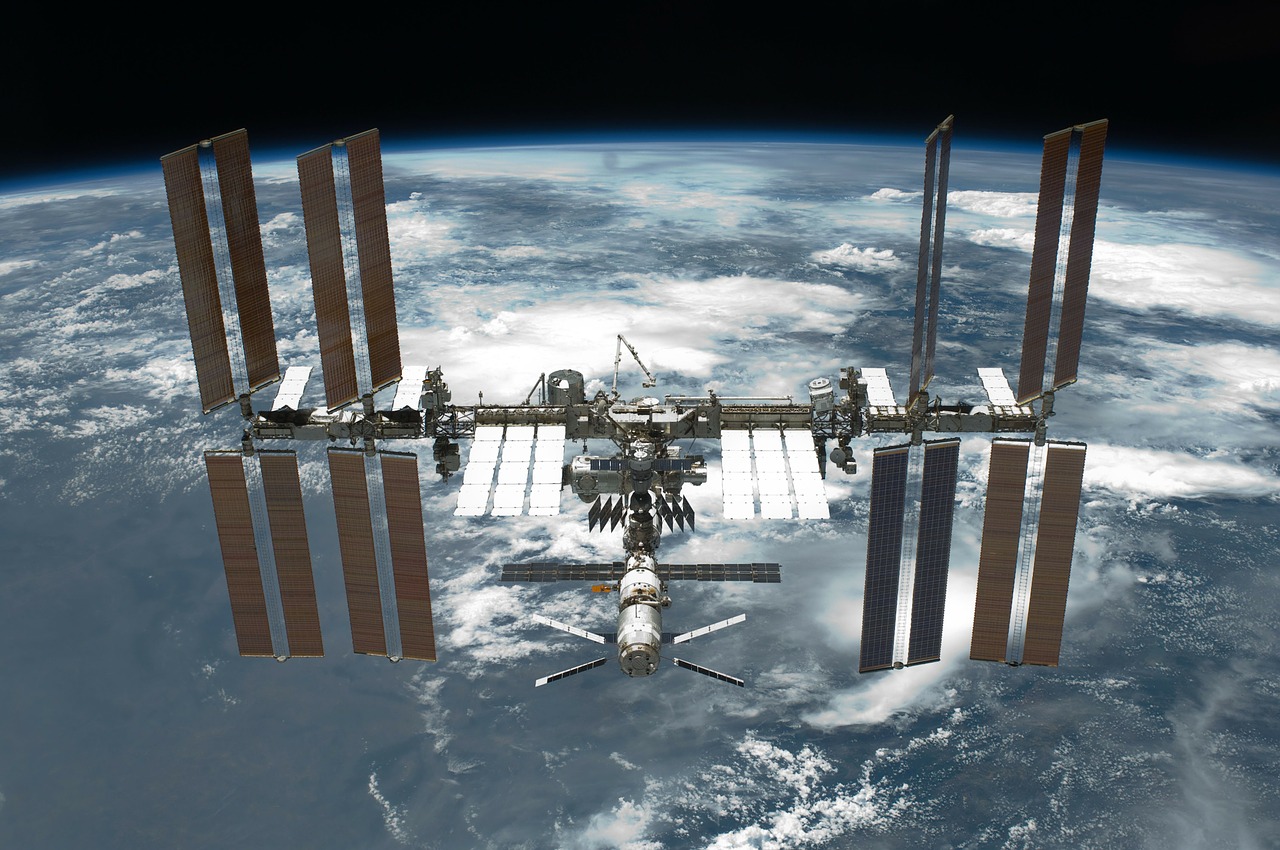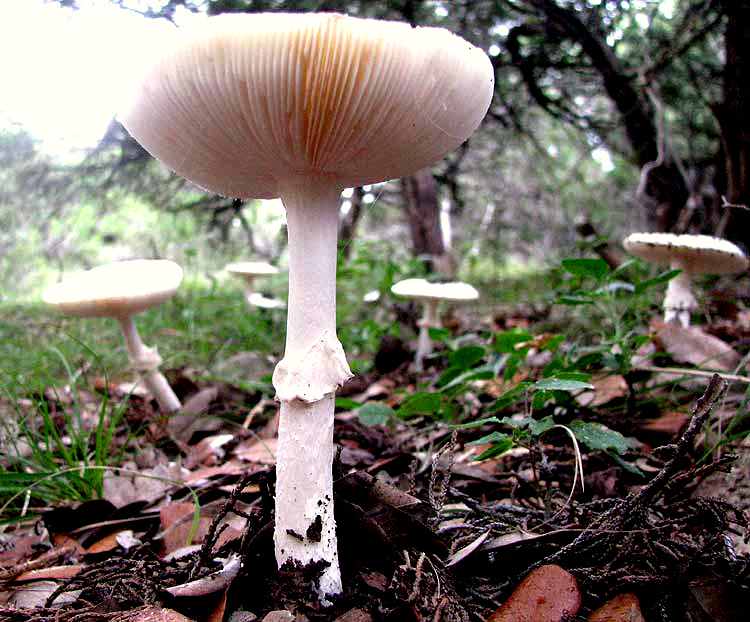
Among the first steps taken when construction began on the International Space Station was to deploy solar panels. The panels provided electricity needed for further construction and future maintenance of life aboard the station.
A similar rush into solar energy has been experienced on Spaceship Earth, which formed about 4.6 billion years ago. Life first appeared on Earth about 4 billion years ago, then about 3.5 billion years ago species arose capable of using sunlight to power photosynthesis. This resulted in the first atmospheric oxygen needed for future Life on Earth.

Those first photosynthesizing organisms bore no leaves. Maybe they looked something like the grayish cyanobacteria scum on the surface of the stream seen at the left. It's clear that the use of solar energy has been around for a long time on Earth. However, in terms of the evolutionary history of Life on Earth, only recently -- 350 million years ago or so -- did the first plants with leaves appear.
However, when you look around today it's clear that this new invention of leaves has been very successful. Leafy plants dominate the world's major ecosystems. Leafy plants producing oxygen are necessary for the continuance of Life on Earth as we know it.
PHOTOSYNTHESIS
Photosynthesis is so important to Life on Earth that it's worth paying attention to it. It's good to meditate on its basic, simplified chemical formula:
CO2 + 2H2O + sunlight
 O 2 + (CH2O)n + H2O
O 2 + (CH2O)n + H2O
or...
carbon dioxide + water + sunlight 
oxygen + carbohydrate + water
NOTE: the carbohydrate can be represented as
C6H12O6 (a simple sugar) as well as (CH2O)n
When carbohydrate is photosynthesized, some remains in the leaf but mostly it's transported elsewhere in the plant, mainly into the stem, or maybe into special underground storage parts such as the potato plant's potatoes.
THOUGHTS BEYOND THE CHEMISTRY

Don't lose sight of the fact that the photosynthesis formula written above says that two essentially transparent items -- carbon dioxide gas and water -- inspirited with energy from sunlight, combine to form visible, very solid plants, even the largest trees. Also, remember that we animals ultimately are kept alive with energy from eating photosynthetic plants, or other organisms who have eaten plants.
On the other hand, the formula also says that when we annihilate those things formed through photosynthesis, we're causing the photosynthesis formula to run backwards. We destroy carbohydrate and products ultimately derived from carbohydrates (burn trees, use petroleum products, etc.) to produce carbon dioxide gas (causing global warming) and water, plus energy, mostly in the form of heat.
OTHER THINGS LEAVES DO:
- they create cooling shade
- they keep wind from drying out the forest ecosystem
- they provide food for a complex community of herbivorous organisms, and other organisms depenedent on those herbivorous organisms

- they form a blanket protecting the soil ecosystem from temperature extremes
- they keep the soil ecosystem from drying out
- they decay and enrich the soil with organic matter and nutrients that can be recycled
SOMETHING WORTH THINKING ABOUT
If you are the kind of person to have found these words, then probably you are acutely aware that leaf-bearing, photosynthesizing plant communities across the world are being destroyed at an ever increasing rate.
Humans are doing this, so the matter for each of us to think about is how we as individual humans either are making the situation better or worse. Each of us affects our planet by choosing to consume what we consume, and by spending our time doing what we're doing.
You may be interested in our page with many links to sources of information about what is going on, and what you can do about it.